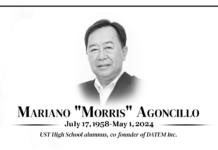IT’S INACCURATE to describe American priests accused of sexual abuse as “pedophiles,” as less than five percent of them fit the category, a report released by US researchers last May showed.
Celibacy should not be blamed, the study by the John Jay College of Criminal Justice of New York also said. The problem should instead be viewed in the context of the sexual revolution of the 1960s and 1970s, the report titled “The Causes and Context of Sexual Abuse of Minors by Catholic Priests in the United States, 1950-2010” said.
There is no “single cause,” but the misconduct was certainly brought about by lack of preparation for the priestly vocation.
Analyzing the study, the New York-based group Catholic League for Religious and Civil Rights noted that the crisis “extended from the mid-1960s to the mid-1980s, peaking in the 1970s. This was a time of increased levels of deviant behavior in society, and the authors properly cite the role played by the sexual revolution in shaping the environment. This is not a justification — it is an explanation.”
But the study was “undermined by its own data” in failing to blame homosexuality in the priesthood despite the overwhelming evidence, the group said.
The report notes that “Celibacy has been constant in the Catholic Church since the 11th century and could not account for the rise and subsequent decline in abuse cases from the 1960s through the 1980s.”
But “Despite many strengths, what seriously mars the report is its ideological reluctance to deal forthrightly with the role of homosexuality,” said Catholic League president Bill Donohue in a statement.
“Let it be said at the outset that it is not my position that homosexuality causes predatory behavior. Indeed, this argument is absurd. As I have said many times, while it is true that most homosexual priests are not molesters, most of the molesters have been priests who are homosexual. Nothing in the report changes my mind, and indeed there is much in it that fortifies my position,” he said.
“The authors insist that homosexuality played no role in the abuse crisis, but their own data undermine this conclusion. For example, they plainly admit that ‘81% of the victims [between 1950 and 2002] were male,’ and that 78% were post-pubescent. So if the abusers weren’t pedophiles, and the victims were mostly adolescent males, wouldn’t that make the victimizers homosexuals?” said Donohue, who has a Ph.D. in Sociology from New York University.
Apparently, seminaries became lenient. “Men ordained in the 1930s, 1940s, and 1950s did not generally abuse before the 1960s or 1970s,” it said. “Men ordained in the 1960s and the early 1970s engaged in abusive behavior much more quickly after their entrance into ministry.”
The United States Conference of Catholic Bishops has since affirmed its commitment to “zero tolerance,” wherein any priest who would be “reliably accused of abuse even once” would be removed from priesthood.
US media exposed the sex abuse crisis in 2002, after which American bishops created a National Review Board and an Office of Child and Youth Protection.
Sought for comment, Vice Rector for Religious Affairs Fr. Winston Cabading, O.P. said it was impossible for anyone to guess whether a would-be-priest would become abusive or not.
“What was being said here is that the Church has no ability to determine through scientific means who would become a good priest and who would become a bad priest in the future,” Cabading said.
He added that people who want to become priests must first understand human sexuality and be able to associate themselves with a life of chastity.
“The meaning of a life of chastity and celibacy is a wholehearted surrender to the service of the Gospel. Your preparedness to serve is also needed. Any form of sexual connection shall become a hindrance,” Cabading said.














